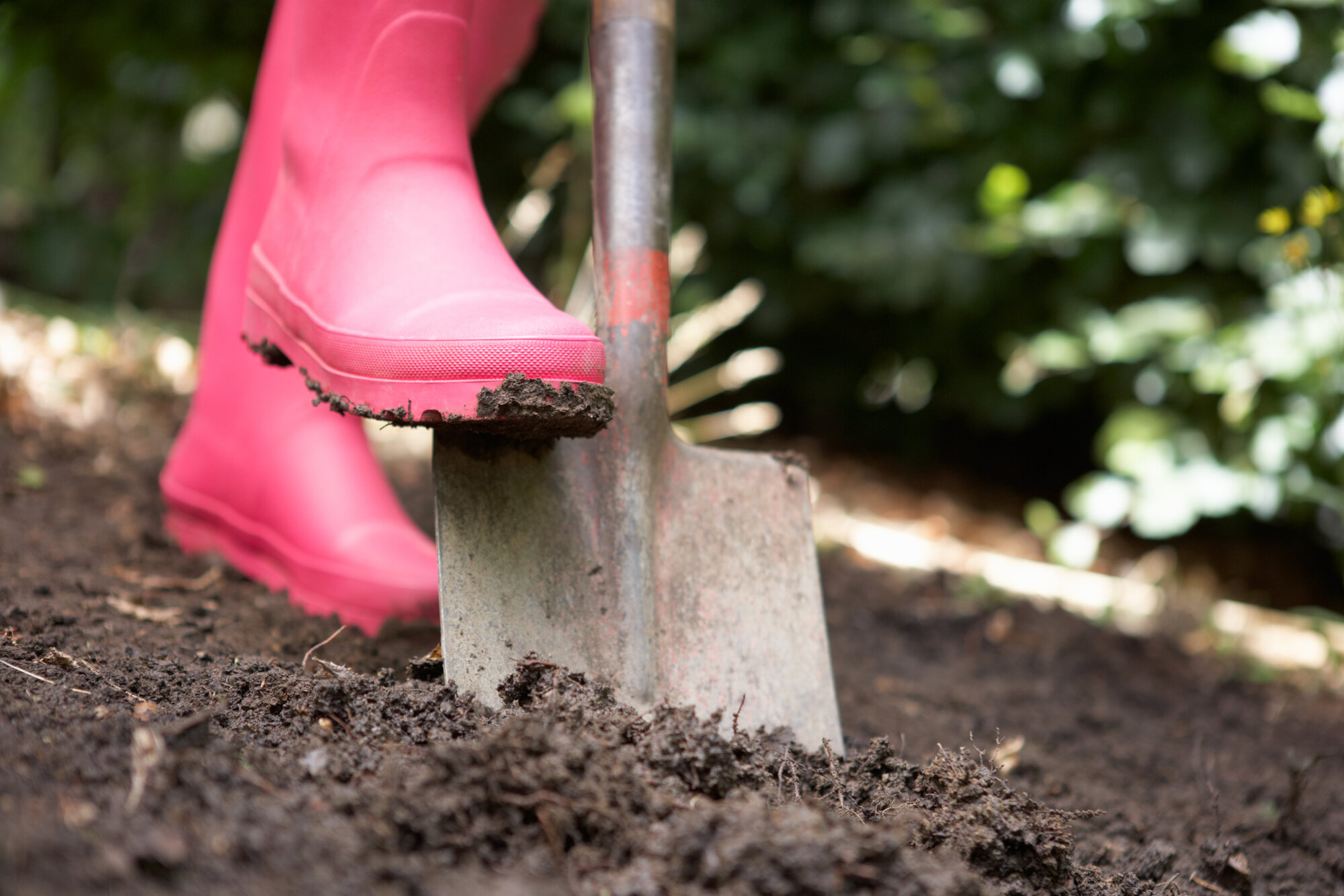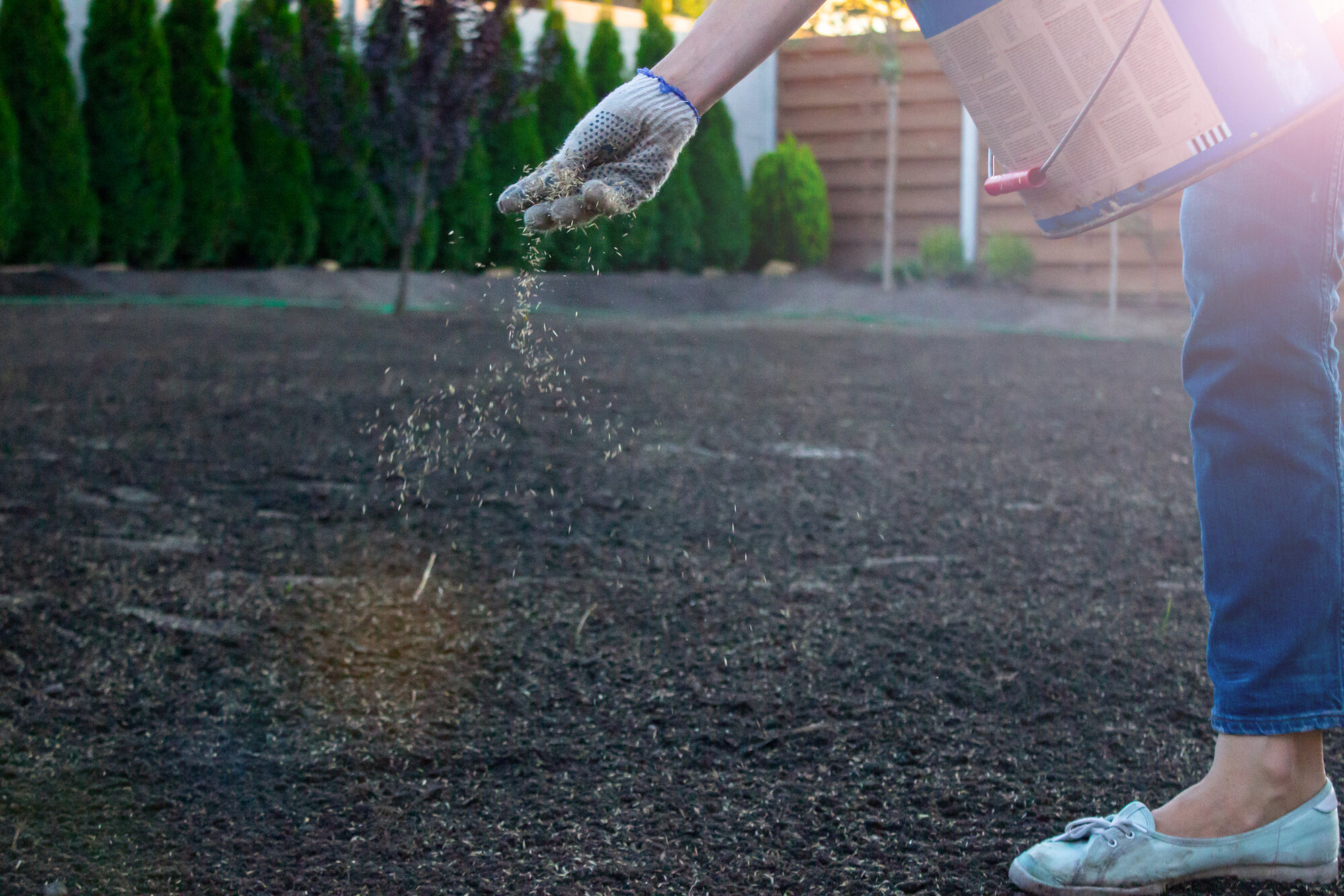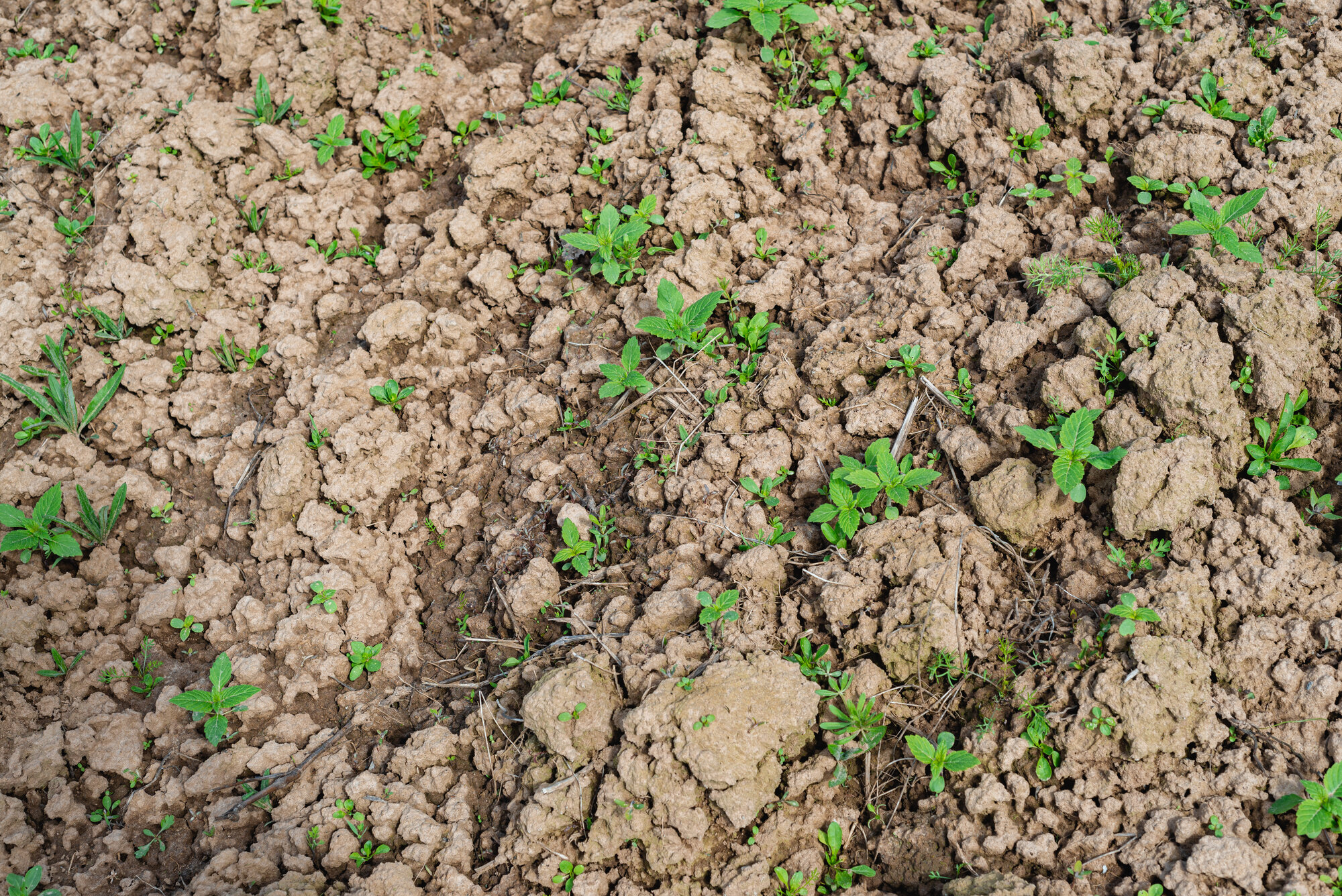7 steps to a new lawn
1. Turning over the soil

The soil should be turned over to the depth of a spade, to under the growth of the green manure plant for humus enrichment and biological fertilisation. For added improvement of the soil, 4-5 bags of garden humus per 100 m² can be evenly distributed and thoroughly worked in. In doing so, clods in the soil are at the same time broken up into smaller pieces.
5. Seed the lawn

If the area is not too wet, sow the lawn mixture evenly by hand or with a spreader at the recommended sowing rate. Lawns can be sown from spring to late autumn, with April, May, June, September and October being the best months. The ideal sowing weather is a rain-free, windless day with light clouds. In order to create optimal starting conditions for the lawn seed, a special fertiliser (starter fertiliser) is also applied to the new seed. Lightly rake in the lawn seed and fertiliser, roll it out and, if necessary, water it lightly to protect the seed from drying out.
6. Water the lawn

In the following 3-4 weeks, the newly sown area must be protected from drying out. If necessary, a lawn sprinkler must be used. It is important that the sprinkler has fine nozzles so that the seed is not washed out and the ground does not become muddy and hard. The best time for irrigation is early morning or late evening.
7. Mowing

When it reached a growth height of approx. 8-10 cm (hand high), the young lawn is mowed for the first time. The lawn mower should have the sharpest possible blades, as the lawn plants are still very sensitive. Also, only the tips (1-2 cm) should be mowed off for the first cut. The subsequent cuts can then be made at the desired lawn height. Frequent cutting – especially when the grass is young – leads to a dense, strong lawn in a very short time.




